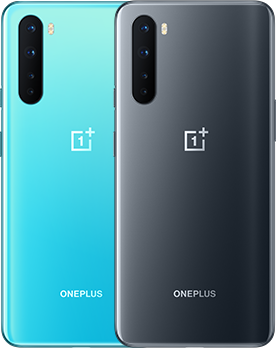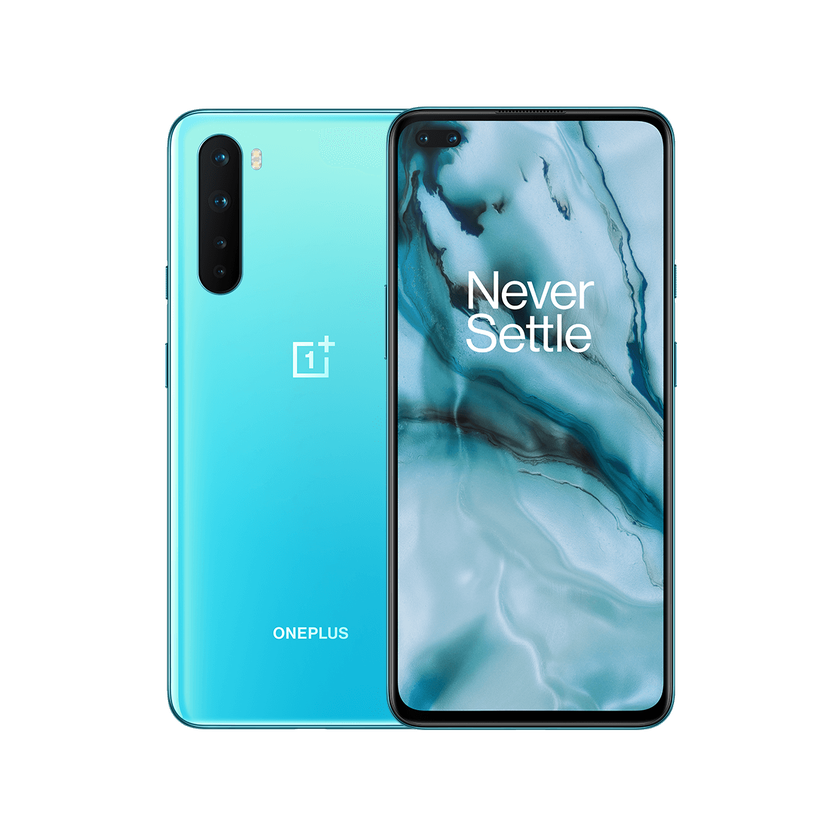The Chinese manufacturer (Oneplus) has launched OnePlus Nord (previously rumored to be called the OnePlus 8 Lite and OnePlus Z). Hype train on the tracks for a while, drip feeding us a number of specs, and even shots of the handset, ahead of its July 21, 2020 launch.
The Nord isn't here to replace the firm's flagship offerings; rather, it's the first in a whole new product line aimed at bringing a broader range of devices to a wider audience.
There's more to come, then, from the Nord brand, but the new OnePlus smartphone is the first – and for now, only – device bearing the name.
Variants:

- Blue Marble

- Gray Onyx

8 GB RAM + 128 GB Storage
₹27,999M.R.P ₹27,999 (incl. of all taxes)
12 GB RAM + 256 GB Storage
₹29,999M.R.P ₹29,999 (incl. of all taxes)
Detailed Specifications:
- Height: 158.3 mm
- Width: 73.3 mm
- Thickness: 8.2 mm
- Weight: 184g
- Size: 16.36 centimeters (6.44 inches)
- Resolution: 2400x1080 pixels 408ppi
- Aspect Ratio: 20:9
- Refresh Rate: 90 Hz
- Type: Fluid AMOLED
- Support sRGB, Display P3
- Cover Glass: Corning® Gorilla® Glass 5
- Video enhancer
- Reading mode
- Night mode
Parameters
Features
- Operating System: OxygenOS based on Android™ 10
- CPU: Qualcomm® Snapdragon™ 765G 5G mobile platform
- GPU: Adreno 620
- RAM: 6GB/8GB/12GB LPDDR4X
- Storage: 64GB/128GB/256GB UFS2.1
- Battery: 4115 mAh (non-removable)
- Warp Charge 30T fast charging (5V/6A)
- Sensor: Sony IMX586
- Megapixels: 48
- Pixel Size: 0.8 µm/48M; 1.6 µm (4 in 1)/12M
- Lens Quantity: 6P
- OIS: Yes
- EIS: Yes
- Aperture: f/1.75
- Megapixels: 8
- Aperture: f/2.25
- Field of View: 119°
- Megapixels: 5
- Aperture: f/2.4
- Megapixels: 2
- Aperture: f/2.4
- Dual LED Flash
- No (Support in sensor zoom 2x)
- Multi Autofocus (PDAF+CAF)
- 1080P video at 30/60 fps, 4k 30 fps
- Super slow motion: 1080P video at 240 fps
- Time-Lapse: 1080P 30 fps, 4k 30 fps
- Video editor
- CINE aspect ratio video recording, UltraShot HDR, Nightscape, Super macro, Portrait, Pro mode, Panorama, AI scene detection, RAW image, Filters, Quick share
- Sensor: Sony IMX616
- Megapixels: 32
- Pixel Size: 0.8 µm/32M; 1.6 µm (4 in 1)/8M
- EIS: Yes
- Autofocus: Fixed Focus
- Aperture: f/2.45
- Megapixels: 8
- Aperture: f/2.45
- Field of View: 105°
- 4K video at 30/60 fps
- 1080P video at 30/60 fps
- Time-Lapse
- Face unlock, HDR, Screen flash, Face retouching, Filters, Ultra wide selfie
Rear camera - Main
Ultra wide angle lens - Rear
Depth lens
Macro lens
Flash
Zoom
Autofocus
Video
Features
Front Camera
Ultra Wide Angle Lens - Front
Video
Features
- 4×4 MIMO, support up to DL Cat 18/UL Cat 13 (1.2Gbps /150Mbps), depending on carrier support
- GSM: GSM850, GSM900, GSM1800, GSM1900
- WCDMA: B1, B2, B4, B5, B8, B9, B19
- LTE-FDD: B1, 2, 3, 4, 5, 7, 8, 12, 17, 18, 19, 20, 26
- LTE-TDD: B38, 39, 40, 41, 46
- 5G: N78
- MIMO: LTE: B1, 3, 40 NR: N78
- *Network connectivity may vary depending on carrier’s network and related service deployment.
- 2x2 MIMO, Wi-Fi 802.11 a/b/g/n/ac, 2.4G/5G
- Bluetooth 5.1, support aptX & aptX HD & LDAC & AAC
- NFC enabled
- GPS (L1+L5 Dual Band), GLONASS, Galileo (E1+E5a Dual Band), Beidou, A-GPS, NavIC
LTE/LTE-A
Band
Wi-Fi
Bluetooth
NFC
Positioning
- In-display fingerprint sensor
- Accelerometer
- Electronic compass
- Gyroscope
- Ambient light sensor
- Proximity sensor
- Sensor Core
- USB 2.0, Type-C, support standard Type-C earphone
- Dual nano-SIM slot
- Gestures and on-screen navigation support
- Left: Volume key
- Right: Power key, Alert slider
- Super linear speaker
- Noise cancellation support
- Playback: MP3, AAC, AAC+, WMA, AMR-NB, AMR-WB, WAV, FLAC, APE, OGG, MID, M4A, IMY
- Recording: WAV, AAC
- Playback: MKV, MOV, MP4, H.265(HEVC), AVI, TS, 3GP, FLV, WEBM
- Recording: MP4
- Playback: Playback: JPEG, PNG, BMP, GIF, WEB, HEIF, HEIC, RAW
- Output: JPEG, DNG
Audio supported formats
Video supported formats
Image supported formats
- OnePlus Nord
- Screen protector (pre-applied)
- Warp Charge 30 power adapter
- Warp Type-C cable (Support USB 2.0)
- Quick start guide
- Welcome letter
- Safety information and warranty card
- Brand sticker
- Phone case
- SIM tray ejector
- Highest SAR value & Plastic recycling card
- Red Cable Club Membership card
- Manufacturer: OPPO Mobiles India Private Limited
- Manufacturer Contact: PLOT-NO.1, SECTOR ECOTECH-VII, GREATER, NOIDA, UTTAR PRADESH, India-201306
- Country of origin: India
- Date First Available: 4 August, 2020

